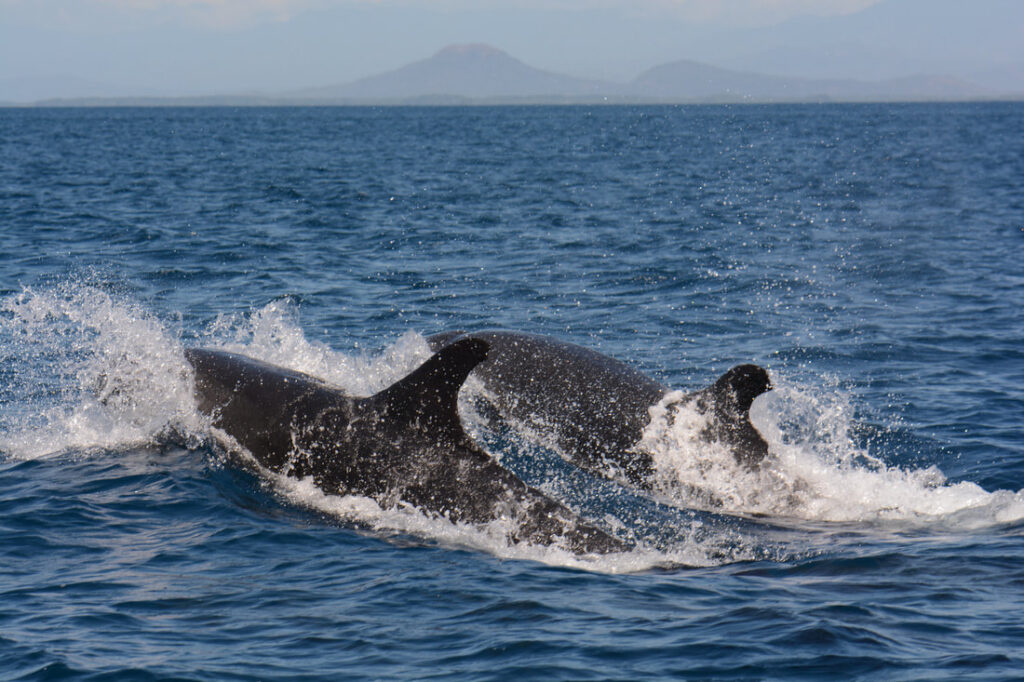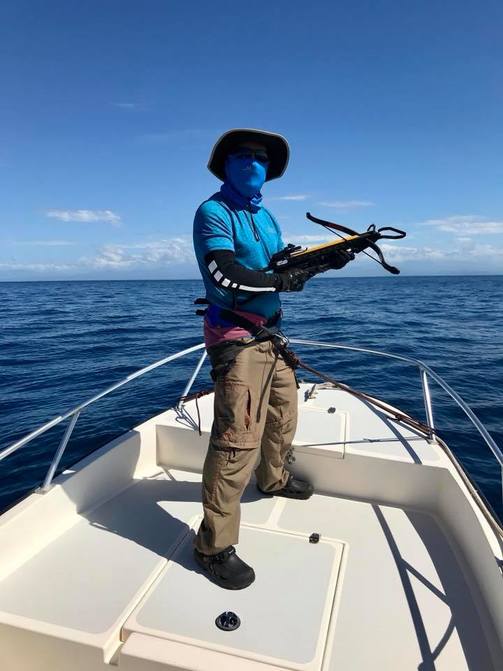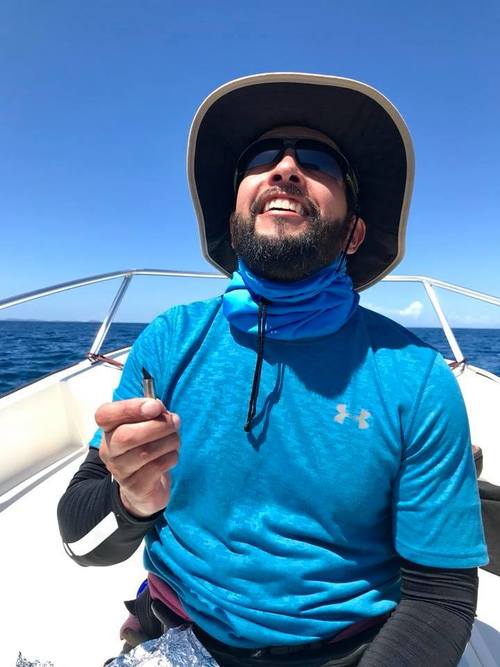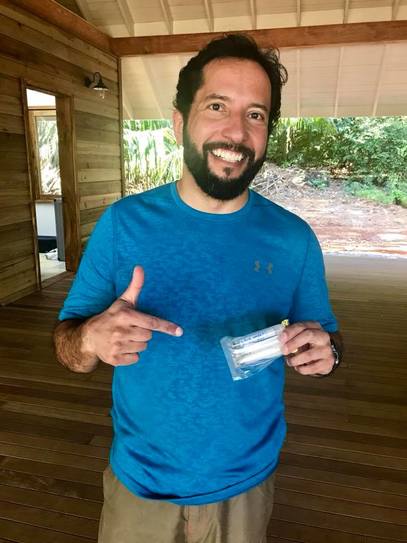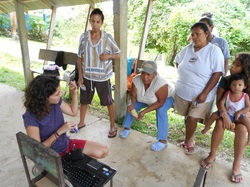Today we surveyed the open ocean while getting familiar with our new captain Chanin, and with our various equipment.
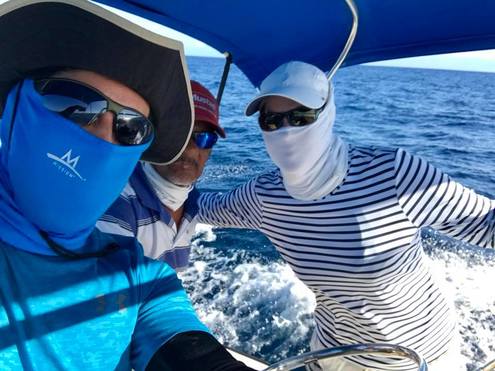
Given the expected low whale density we reduced our survey speed to 9 knots and stopped every 15-20 minutes to listen for humpback whale song. And it paid off: we heard distant song on three of our listening stations, so we know male humpbacks are engaged in courtship behavior here.
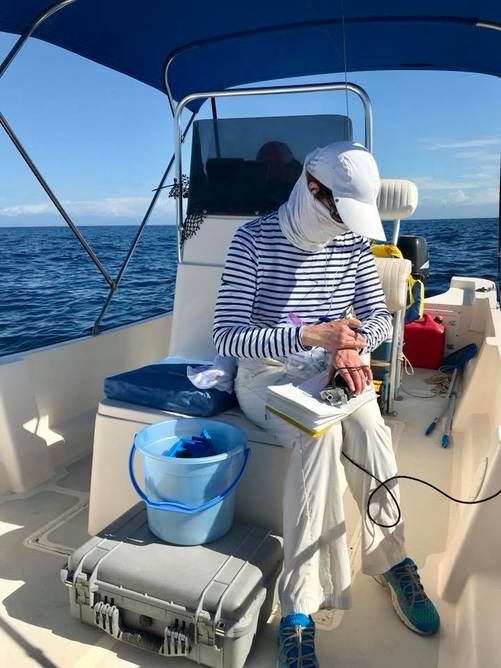
We also encountered a group of spotted dolphins early in the morning. But the day’s show was stolen by a large aggregation of false killer whales (Pseudorca crassidens). We first heard their loud whistles on our hydrophone and then saw their large splashes from a distance. We stayed with them for about an hour as we moved from subgroup to subgroup to collect photo-IDs. We also collected three biopsies for DNA studies.
